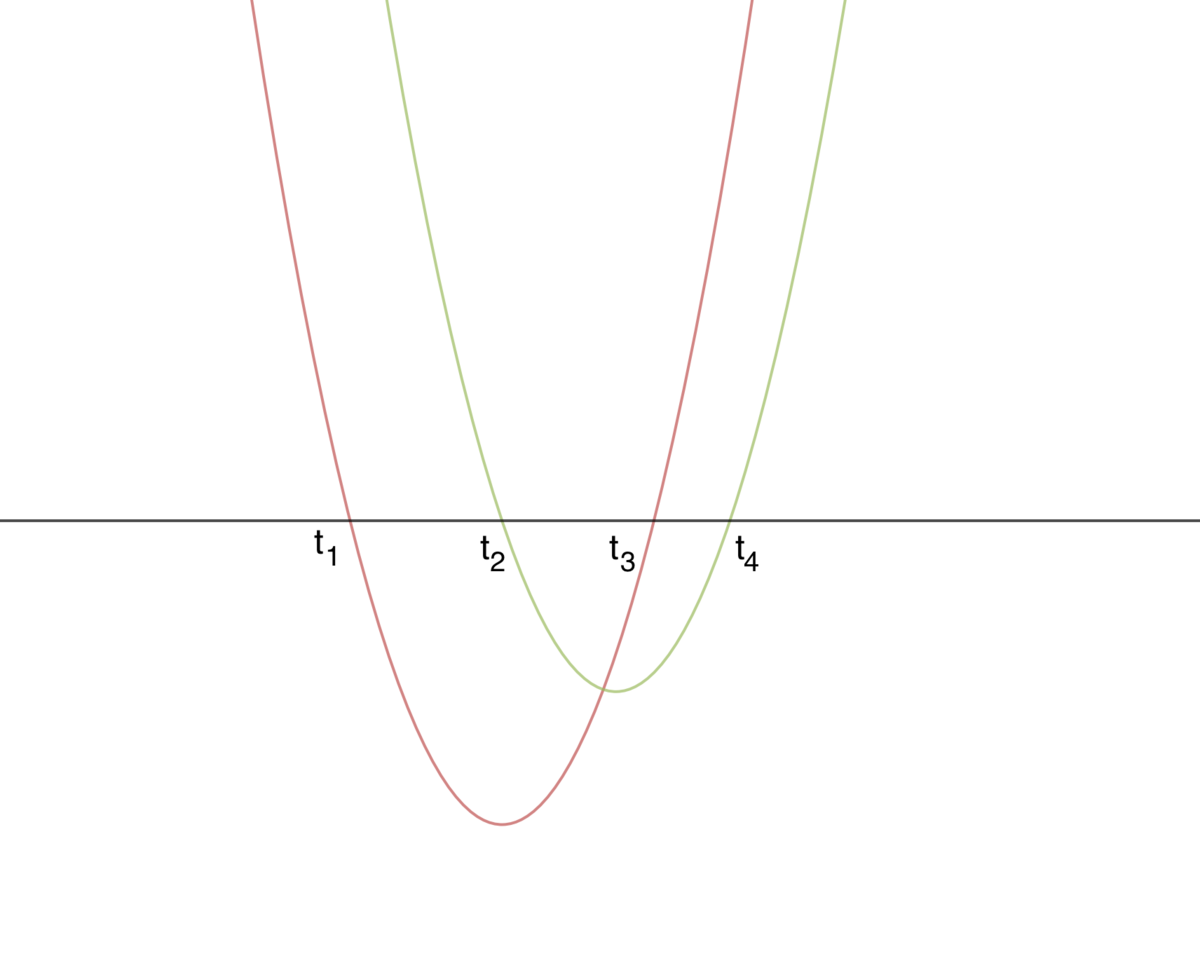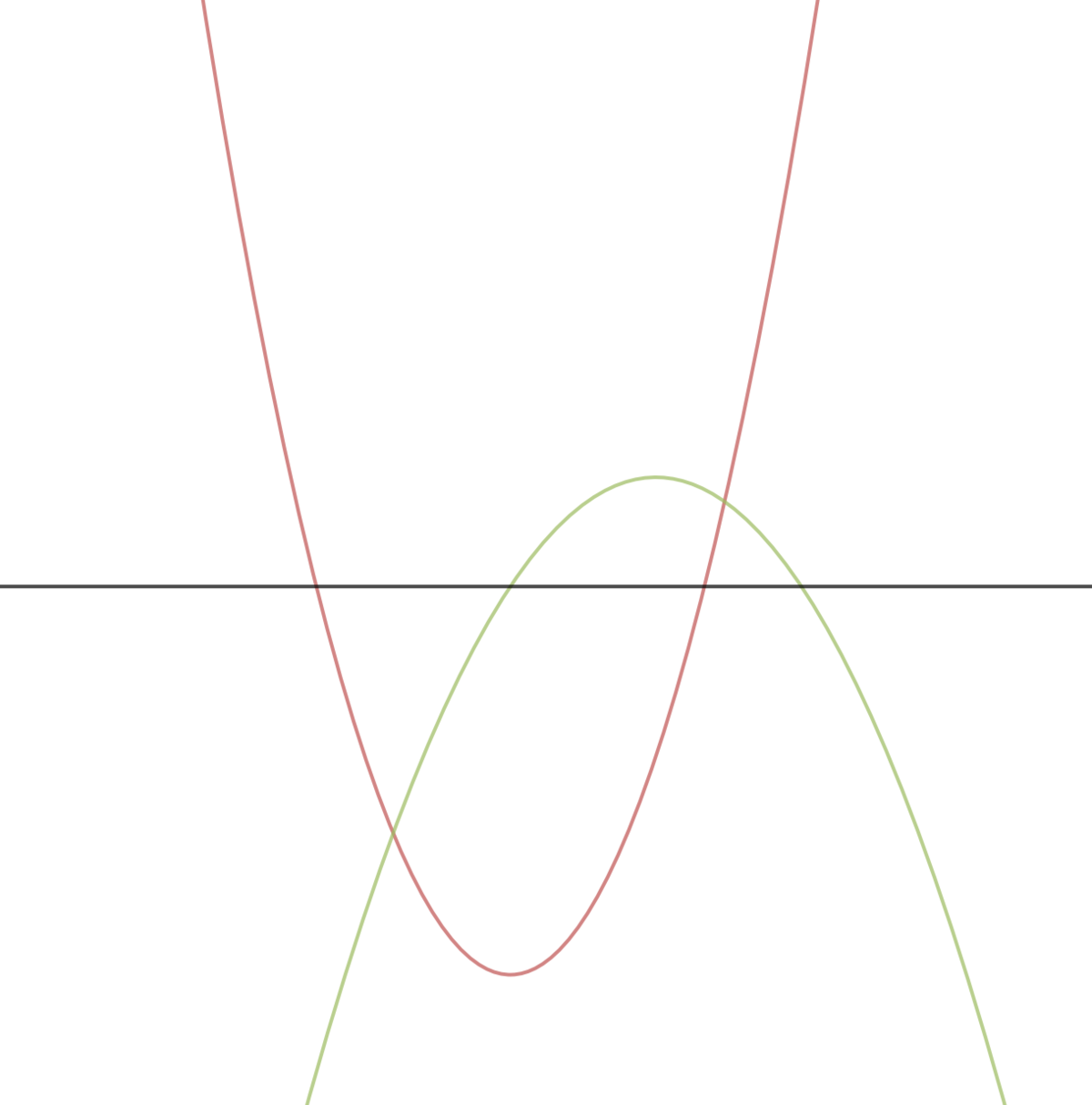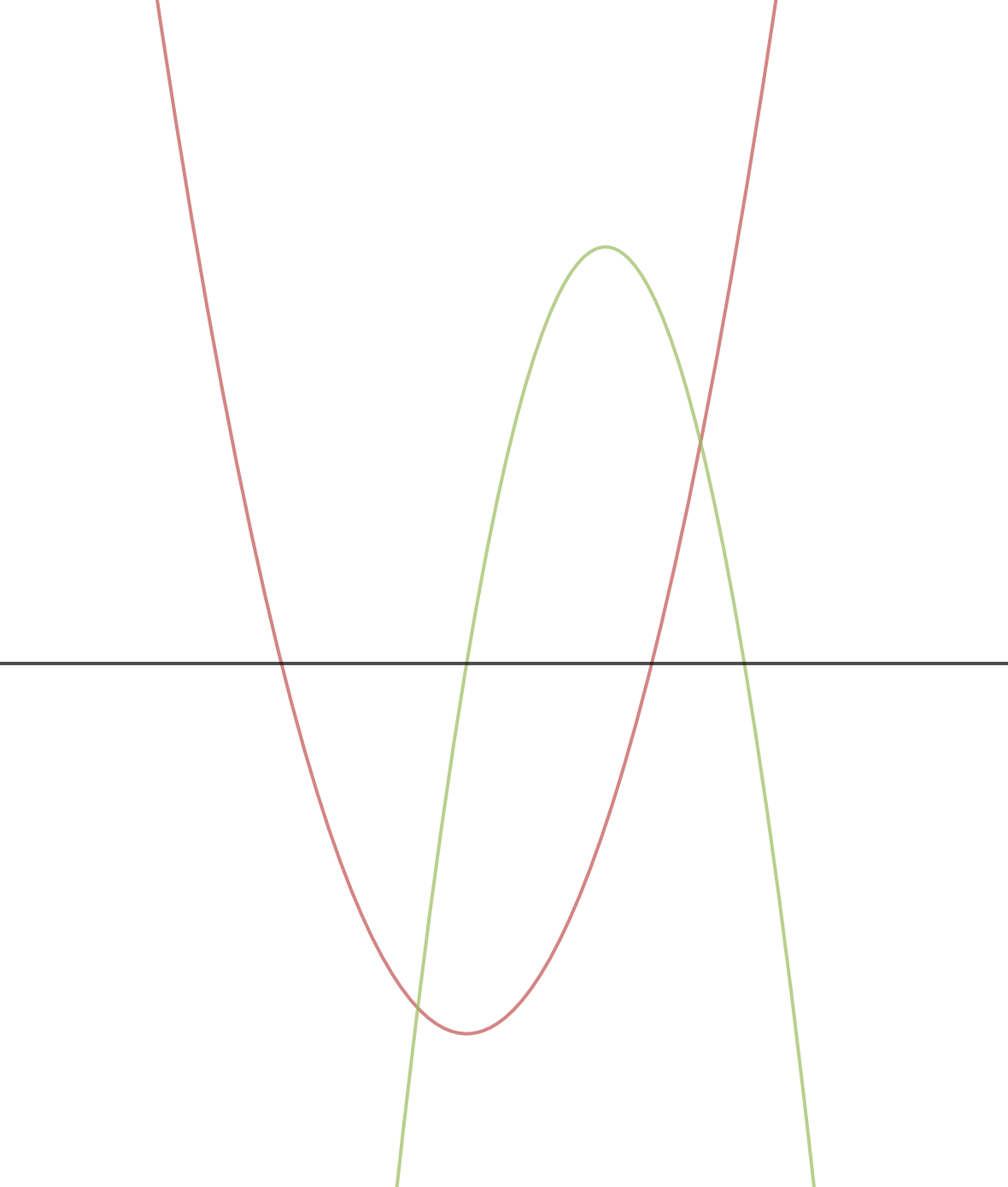These guys are increasingly same
( x − t 1 ) ( x − t 3 ) + k ( x − t 2 ) ( x − t 4 ) = 0
Find the values of k for which the above equation has real roots, if provided that t 1 < t 2 < t 3 < t 4 .
This section requires Javascript.
You are seeing this because something didn't load right. We suggest you, (a) try
refreshing the page, (b) enabling javascript if it is disabled on your browser and,
finally, (c)
loading the
non-javascript version of this page
. We're sorry about the hassle.
4 solutions
We will plot graphs of the function f ( x ) = ( x − t 1 ) ( x − t 3 ) , and g ( x ) = k ( x − t 2 ) ( x − t 4 ) for different values of k . Both of them will be parabolæ (if k = 0 ); we can definitely say that f ( x ) will open upwards because the coefficient of x 2 is positive, but the orientation of g ( x ) will depend on k .
Let h ( x ) = f ( x ) + g ( x ) . We are to determine the nature of roots of h ( x ) . The intervals for k are chosen in such a way that in any interval, the sign of the coefficients of x 2 of g and h do not change in an interval.
Case 1. k > 0
 (
f
is plotted in red,
g
is plotted in green)
(
f
is plotted in red,
g
is plotted in green)
g will also open upwards. When we plot h , it will also be a upwards opening parabola. Since f and g are both negative in the interval ( t 2 , t 3 ) , h will definitely be negative in this interval. It means h crosses the x - axis twice, and therefore h ( x ) = 0 has real roots.
Case 2. k = 0
When k = 0 , g ( x ) = 0 , therefore h ( x ) = f ( x ) . f has two real roots t 1 and t 3 , so h also has real roots.
Case 3. − 1 < k < 0
The coefficient of x 2 in h is positive, so h will be upward opening parabola. The graph of f and g will look like this.

Since there exists an interval (between t 1 and t 2 ) where both f \and g are negative, there exists an interval where h is negative; it crosses the x axis twice and has two real roots.
Case 4. k = − 1
The coefficient of x 2 is 0 but coefficient of x is not 0 (because t 1 + t 3 = t 2 + t 4 ) . h is now linear with slope not zero, so it will definitely have a real root.
Case 5. k < − 1
The coefficient of x 2 in h is negative, so h will be downward opening parabola. The graph of f and g will look like this.

Since there exists an interval (between t 2 and t 3 ) where both f and g are positive, there exists an interval where h is positive; it crosses the x axis twice and has two real roots.
We have covered the entire real axis, and h possesses real roots for every real value of k . □
Moderator note:
Having solved the problem and coming to the realization of what the answer is, you should review this and see if there is an alternative approach to dealing with all of these cases.
Possible approaches:
1. Essentially, what this question is asking for is to show that
Δ
≥
0
. Is there an algebraic inequality way to do so?
2. Intermediate value theorem. Evaluate
h
=
f
+
k
g
at the 4 points.
[(x-t1)(x-t3)]/[(x-t2)(x-t4)]=-k (By rearranging given equation)
[(x-t1)(x-t3)]/[(x-t2)(x-t4)]=0 Now of we plot this graph we would see that for any line parallel to x axis we will find atleast one point of intersection between graph and line this is sufficient to prove that for any value of k there would be atleast one real solution. P.S. somebody kindly upload graph for better visualization because i am unable to do so
Let f ( x ) = ( x − t 1 ) ( x − t 3 ) + k ( x − t 2 ) ( x − t 4 )
We have:
f ( t 2 ) f ( t 4 ) = = ( t 2 − t 1 ) ( t 2 − t 3 ) ( t 4 − t 1 ) ( t 4 − t 3 ) < > 0 0
by the intermediate value theorem, it exists α in ( t 2 , t 4 ) such f ( α ) = 0
Multiplying the given equation by "k" on both sides..... We get a quadratic in k. Now Discriminant >=or <0 We get only a perfect square So Discriminant is always >=0 So k is always real